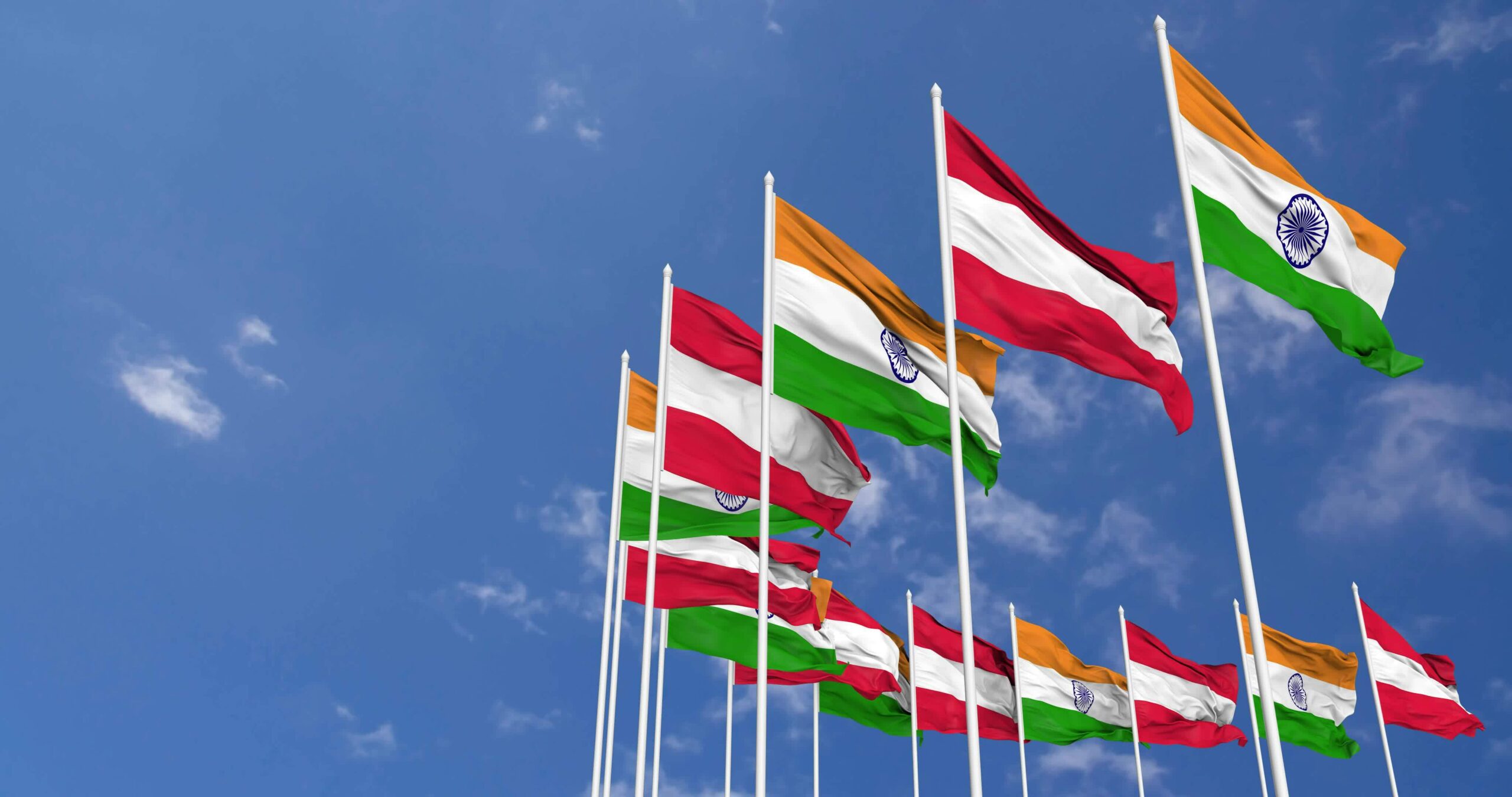Bilateral, Regional and Global Groupings and Agreements involving India and/or affecting India’s interests; Effect of Policies and Politics of Developed and Developing Countries on India’s interests, Indian Diaspora
Recent visit of the Indian prime minister to Austria marks the 75th diplomatic relations between the two countries and a symbol of bridging East and West. Comment.
India and Austria enjoy a complex relationship that extends into the political, economic, sectoral, and cultural spheres. Diplomatic relations between India and Austria were established in 1949 by India’s first Prime Minister Jawaharlal Nehru and Austria’s first post-World War II Chancellor Leopold Figl.
- Cultural & Historical ties: Balthasar Springer, who accompanied the third Portuguese fleet on a journey to India in 1505, began the long history of Indo-Austrian cultural ties in the sixteenth century. One of the most important links was the two visits to Vienna made by Nobel Laureate and Indian philosopher-poet Rabindranath Tagore in 1921 and 1926. In his well-known 1921 lecture, “The religion of the forest,” Gurudev stressed the importance of developing compassion, unity, and a stronger relationship with nature.
- Modern Indian Culture: Modern Indian theatre and literature are much sought after. In Austria, Ayurveda, a traditional Indian medical method, is extensively accepted and used.
Diaspora Connection: Over 31,000 Indians, primarily from Punjab and Kerala, are thought to be residing in Austria. Professionals employed mostly in the healthcare industry and for multilateral UN entities, businesspeople, and independent contractors make up the majority of the Indian diaspora. - Economic ties: In 1983, the Joint Economic Commission (JEC) between Austria and India was founded. It offers a platform for two-way communication between the Chambers of Commerce and Industry and government Ministries.
- Bilateral Trade: In 2022, the two countries’ bilateral trade is expected to reach USD 2.84 billion, a 14.97% rise from 2021 levels. In 2021, 1.18 billion USD was imported and 1.29 billion USD was exported from India to Austria. Electronic goods, apparel, footwear, textiles, rubber goods, automobile and railroad parts, electrical machinery, and mechanical appliances are among India’s top exports to Austria. The main products that India imports from Austria include iron and steel, railway parts, machinery, and mechanical appliances.
- Investment: Among the principal Indian investors in Austria are KTM-Bajaj Auto, VA Tecg Wabag Ltd., Shilpa Medicare, and Wipro Technologies. For roughly USD 100 million in December 2021, the Indian edtech business Byju’s purchased the Austrian start-up Geogebra.
- Science and Technology Cooperation: In 2013, India’s PSLV-C20 launched Austria’s first two satellites, TUGSAT-1/BRITE and UniBRITE, from the Satish Dhawan Space Centre in Sriharikota.

Significance of India-Austria Relations:
Geopolitical Significance: Both nations have collaborated on international issues such as UN Security Council changes and share democratic and pluralistic principles. Austria has acknowledged India’s expanding global influence by endorsing India’s ambition for a permanent seat on the UNSC.
Economic Significance: Austria is among the wealthiest nations in the EU. For India, it serves as a crucial conduit between the continent and Europe, particularly with the nations of Central and Eastern Europe.
Technological Significance: Austria is a leader in renewable energy technology, including green hydrogen. Austrian knowledge can play a major role in India’s Green Hydrogen Mission and its goal of having net zero emissions by 2070.
Similar Global Views: Despite tensions around the world, both nations have taken a balanced stance toward the Russia-Ukraine issue, preserving diplomatic and economic ties. The Austrian State Treaty of 1955 established Austria’s neutral position.
Challenges:
1. Geographical Distance: India and Austria are separated by a considerable amount of space. The frequency and depth of bilateral engagements have been restricted as a result.
2. Trade Imbalance: Austria is the beneficiary of a large trade imbalance. India exports relatively little and imports a large amount of high-value items from Austria, including chemicals, machinery, and pharmaceuticals.
3. Disparities in Economic Structures: Austria boasts a robust industrial and manufacturing basis, while India’s economy is mostly driven by agriculture and services. Low commerce penetration between countries is a result of these disparities in economic frameworks.
4. Sluggish and Delayed Visa Processes: Travel between the two nations can be impacted by the sluggish and delayed visa policies and procedures, which can affect tourism, business travel, and interpersonal relationships.
Way Forward:
- India and Austria have signed a “Comprehensive Migration and Mobility Partnership Agreement,” which will aid in resolving their respective countries’ visa and mobility-related concerns.
- India and Austria need to work together more in fields like education, technology, and renewable energy.
- Austria and India should cooperate with peace initiatives in the Middle East and Europe and support an open, free, and rules-based Indo-Pacific.
For mutual gain, India must take use of Austria’s status as a neutral European state and its function as a geopolitical bridge builder. India’s development aspirations and Austria’s technological and industrial capacities need to be examined for potential synergies.

